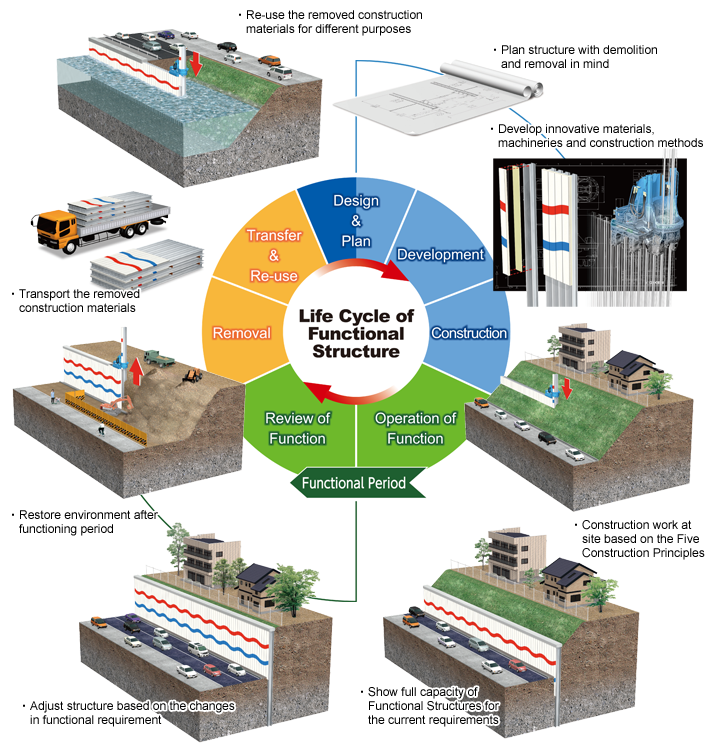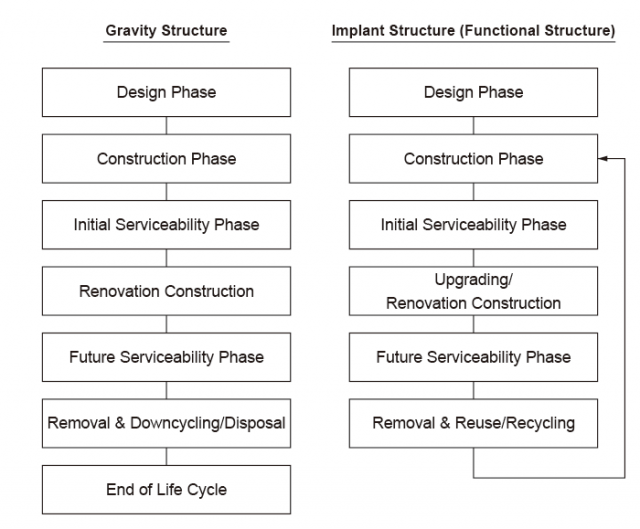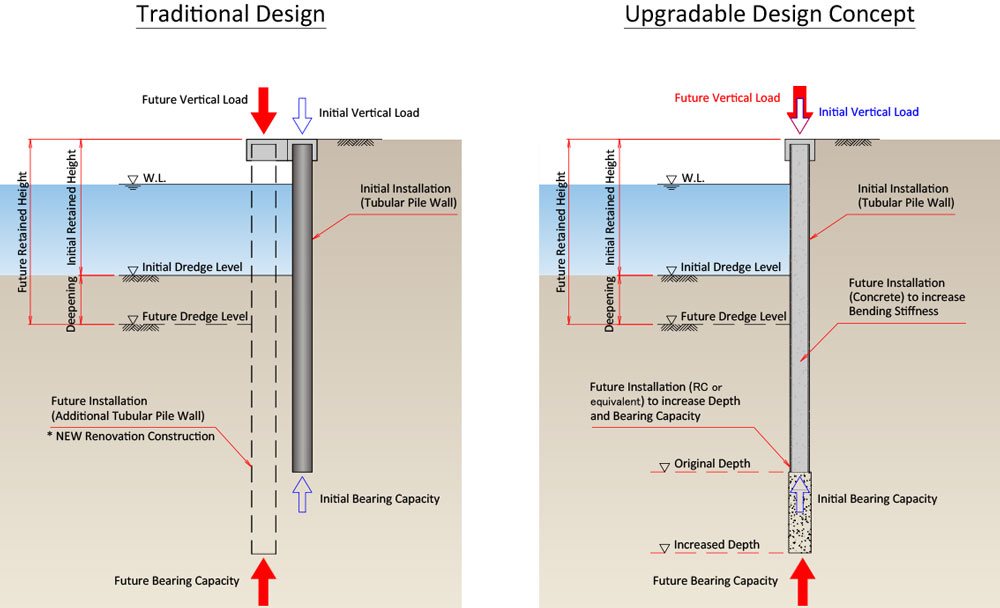In order to realise to-be state of construction, which GIKEN has been proposing, we need to completely change our way of thinking not just about how to build a structure but how the structure itself works. The way how “permanent structure” works, which has been the most preferred choice by engineers for many years, has a substantial defect. It stands on the idea that functionalities of the structure do not change forever. Consequently the idea leads us to accept excessive construction cost due to excessive safety design. In addition to this excessiveness, the structure built with the idea requires large-scale demolition and construction when it needs to be reconstructed.
In the ever changing human society, neither the value last long or forever, nor structures work as expected forever. The timing that they need to be useless comes eventually.
In this decade when the progress of technology development and cultural development is significant, we need to change our way of thinking regarding the “permanent structure” that makes its purpose, location and functionality unchangeable. This endorses the need for the society to demand a new approach to construction.
Recyclable and Sustainable Society
In order for us to sustain our highly civilised society, we need to adjust ourselves according to changes of time and development of culture. It will require us to flexibly manage the life cycle of functional structure such as changes in function of infrastructures, restoration of natural environment and re-cycle of construction material.
The issue of how to demolish and re-use or recycle structures at the end of their life should be “engineered” into every structure. This is the key to sustainable development and total design, incorporating flexible functional changes and end of life recycling processes.
Life Cycles of Infrastructures
Upgradable Design Concept
In the service phase, functional adaptations of infrastructures may be required due to a higher demand of functional requirements, shorter structural lifetimes than planned or the necessity of further usage of the same structure at the end of its planned life. To meet the functional adaptations, traditional structures with the "Scrap & Build" design concept ultimately need high renovation construction and demolition costs. However, with the "Upgradable & Reusable" design concept, the Implant Structures can more effectively and efficiently satisfy the stipulated functional adaptation. Therefore, the total investment costs i.e. construction, operational, maintenance, renovation construction and demolition costs can meet the optimum cost/quality relation.





